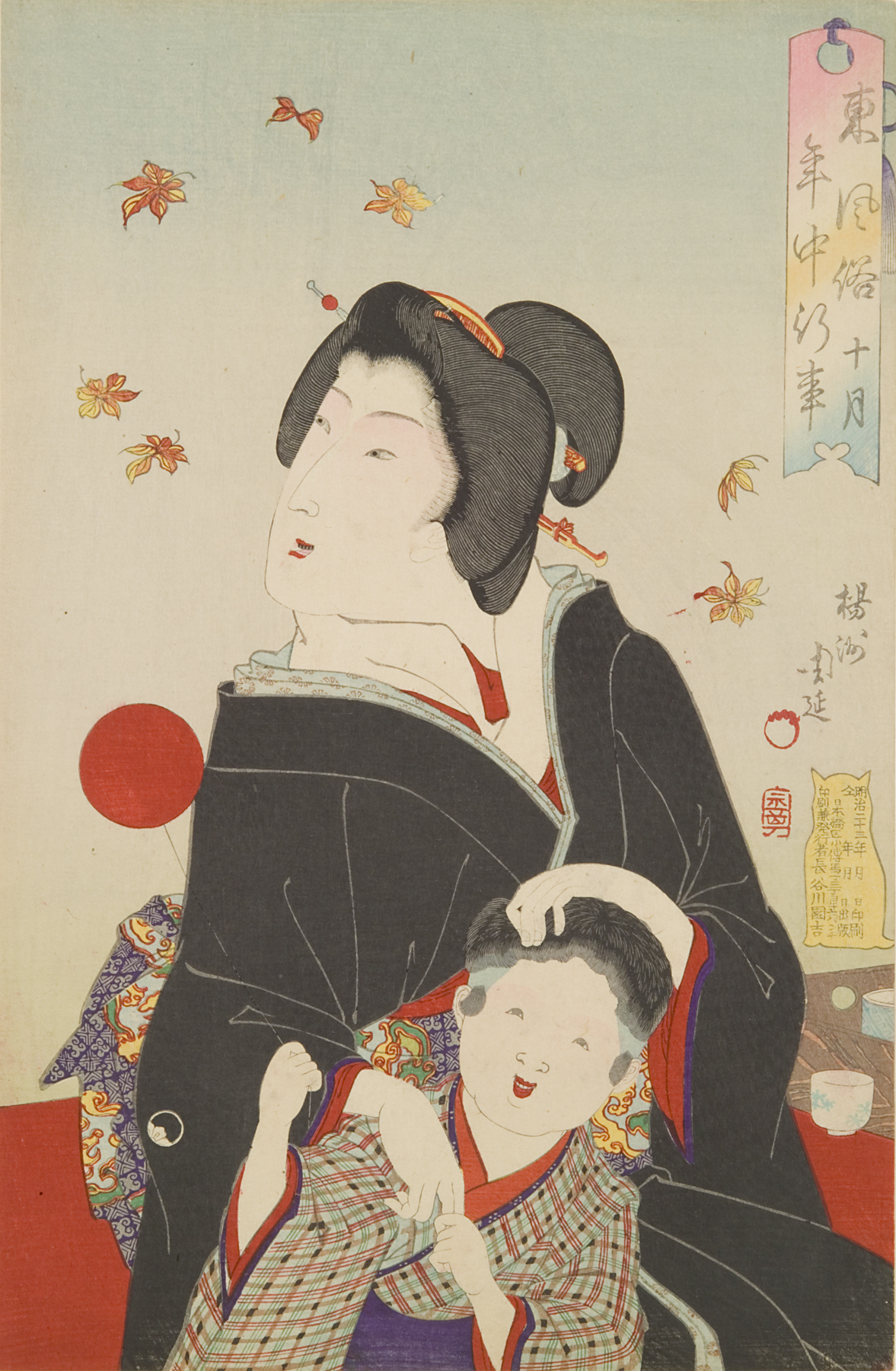jūgatsu (The Tenth Month), Toyohara Chikanobu
Artwork Overview
Toyohara Chikanobu, artist
1838–1912
jūgatsu (The Tenth Month),
1890, Meiji period (1868–1912)
Portfolio/Series title: Nenju gyoji (Calendar of Eastern Customs)
Where object was made: Japan
Material/technique: color woodcut; karazuri
Dimensions:
Image Dimensions Height/Width (Height x Width): 359 x 235 mm
Image Dimensions Height/Width (Height x Width): 14 1/8 x 9 1/4 in
Sheet/Paper Dimensions (Height x Width): 359 x 235 mm
Sheet/Paper Dimensions (Height x Width): 14 1/8 x 9 1/4 in
Mat Dimensions (Height x Width): 19 x 14 in
Image Dimensions Height/Width (Height x Width): 359 x 235 mm
Image Dimensions Height/Width (Height x Width): 14 1/8 x 9 1/4 in
Sheet/Paper Dimensions (Height x Width): 359 x 235 mm
Sheet/Paper Dimensions (Height x Width): 14 1/8 x 9 1/4 in
Mat Dimensions (Height x Width): 19 x 14 in
Credit line: Museum purchase: Lucy Shaw Schultz Fund
Accession number: 2007.0062.10
Not on display
If you wish to reproduce this image, please submit an image request


